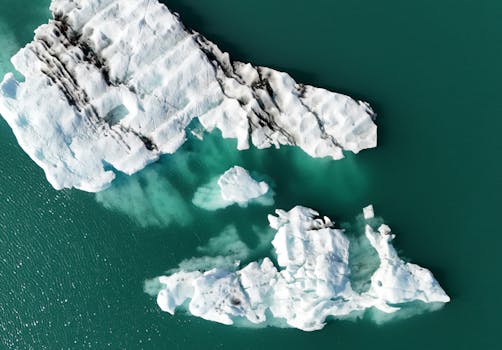
How Satellites Monitor Climate Change and Environmental Shifts
How Satellites Monitor Climate Change and Environmental Shifts is an essential aspect of understanding the impact of human activities on the environment. Climate change and environmental shifts are two of the most pressing issues of our time, with far-reaching consequences for our planet and its inhabitants. Satellites have become a vital tool in monitoring these changes, providing valuable data on temperature, sea level, and ice sheet changes. In this article, we will explore the role of satellites in monitoring climate change and environmental shifts, and how this information is used to inform decision-making and policy development.
Satellites have been used for decades to monitor the environment, but in recent years, their capabilities have expanded significantly. With the launch of new satellite constellations and the development of advanced sensors, satellites can now collect data on a wide range of environmental parameters, including temperature, precipitation, sea level, and ice sheet extent. This data is used to track changes in the environment, identify trends, and predict future changes.
The Role of Satellites in Monitoring Climate Change
Satellites play a crucial role in monitoring climate change by providing data on key climate indicators such as temperature, sea level, and ice sheet extent. Temperature data is collected using thermal infrared sensors, which measure the temperature of the Earth’s surface and atmosphere. This data is used to track changes in global temperature, which is a key indicator of climate change. Sea level data is collected using radar altimeters, which measure the height of the ocean surface. This data is used to track changes in sea level, which is an important indicator of climate change.
Ice sheet extent is monitored using optical and radar sensors, which provide data on the extent and thickness of ice sheets. This data is used to track changes in ice sheet extent, which is an important indicator of climate change. Satellites also provide data on other climate indicators, such as precipitation, atmospheric circulation patterns, and ocean currents.
The Role of Satellites in Monitoring Environmental Shifts
Satellites also play a crucial role in monitoring environmental shifts, such as deforestation, land degradation, and ocean pollution. Deforestation is monitored using optical and radar sensors, which provide data on forest cover and changes in forest extent. This data is used to track changes in forest cover, which is an important indicator of environmental health. Land degradation is monitored using optical and radar sensors, which provide data on soil moisture, vegetation health, and land use changes.
Ocean pollution is monitored using radar and optical sensors, which provide data on oil spills, ocean currents, and marine debris. This data is used to track changes in ocean health, which is an important indicator of environmental health. Satellites also provide data on other environmental indicators, such as air quality, water quality, and soil quality.
Conclusion
In conclusion, satellites play a vital role in monitoring climate change and environmental shifts. By providing data on key climate and environmental indicators, satellites help us understand the impact of human activities on the environment and inform decision-making and policy development. As the capabilities of satellites continue to expand, we can expect to see even more accurate and detailed data on climate change and environmental shifts, which will be essential for mitigating the effects of these changes and creating a more sustainable future.
